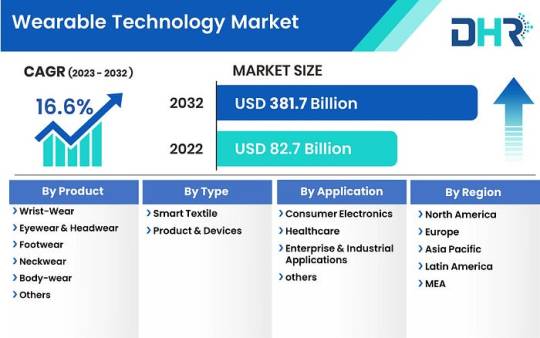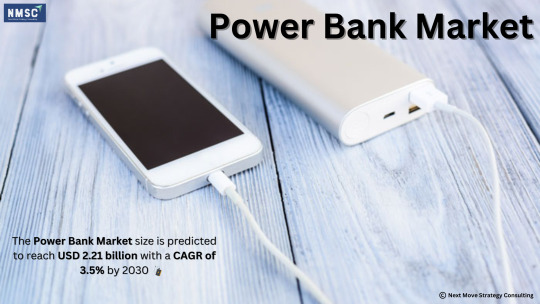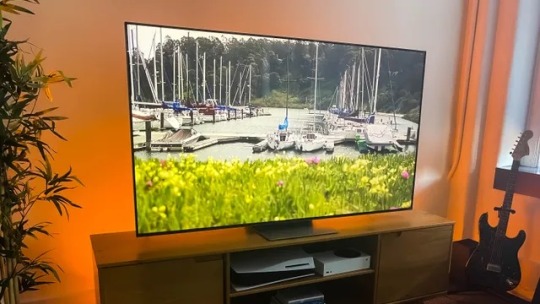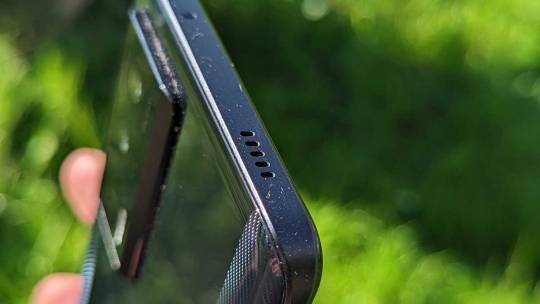#xiaomi corp
Text
#xiaomi#xiaomi corp#redmi note 12 pro#miui14#miui 13 themes#شاومي#شاومي 13#جوالات#العربية#الرياض الآن#بنات الرياض#مصرف الراجحي#شات سعودي#آل سعود#الباطن#الموصل#العراق#جوالات 2023#smartwatch#technology#موقع زيزوتكنو#زيادة متابعين#زيادة المشاهدات#زيزوتكنو#zezotehno
0 notes
Text
भारत 12,000 से कम कीमतों वाले चीनी फोन पर लगाना चाहता है प्रतिबंध, रिपोर्ट में दावा
भारत 12,000 से कम कीमतों वाले चीनी फोन पर लगाना चाहता है प्रतिबंध, रिपोर्ट में दावा
India Ban Chinese Phones: भारत (India) चीन (China) को बड़ा झटका दे सकता है. इंडिया चीनी स्मार्टफोन निर्माताओं को 12,000 रुपये से कम कीमत के डिवाइस बेचने पर प्रतिबंधित लगाना चाहता है, जिससे शाओमी कॉर्प (Xiaomi Corp) समेत कई ब्रांडों को झटका लगेगा. भारतीय बाजार से बहिष्कार से Xiaomi और उसके देश के कई कंपनियों को नुकसान होगा, जिन्होंने हाल के सालों में भारत में तेजी से निवेश किया, जबकि उनका घरेलू…
View On WordPress
#Chinese Phone#realme#Xiaomi Corp#चीन#चीनी मोबाइल फोन#भारत#भारत चीन के कारोबार को देगा झटका#भारत बंद करेगा सस्ते चीनी फोन#रिएलमी#शाओमी कॉर्प
0 notes
Text
China says India's frequent probes of its firms hurt business confidence
China says India’s frequent probes of its firms hurt business confidence
MUMBAI: Multiple investigations by Indian enforcement agencies into Chinese companies are damaging the confidence of foreign entities investing and operating in the country, China’s embassy in the South Asian nation has said. Many Chinese firms have struggled to do business in India after political tension surged following a border clash in 2020. India has cited security concerns in banning more…

View On WordPress
#business#Business News#China#chinese companies raids#chinese firms raids#confidence#ED raid vivo#firms#frequent#Hurt#Indias#Probes#vivo#xiaomi corp
0 notes
Text
Khi các nhà sản xuất ô tô Nhật Bản hết phép, điều gì sẽ xảy ra?
Một loạt các nhà sản xuất ô tô toàn cầu, trong đó có các nhà sản xuất ô tô Nhật Bản, đang ngày càng có xu thế chuyển hướng sang hợp tác với các gã khổng lồ công nghệ Trung Quốc trong nỗ lực giành lại thị phần tại một trong những thị trường ô tô lớn nhất và thay đổi nhanh nhất thế giới.
Thay đổi hoặc không bao giờ

Toyota Motor Corp. cho biết họ sẽ hợp tác với gã khổng lồ công nghệ Trung Quốc Tencent Holdings Ltd. trên các lĩnh vực bao gồm trí tuệ nhân tạo, điện toán đám mây, dữ liệu lớn và kết nối truyền thông xã hội. Trong khi đó, Nissan Motor Co. sẽ hợp tác với Baidu Inc. về AI, bao gồm cả buồng lái thông minh.
Các mối quan hệ hợp tác đã cho thấy áp lực mà các nhà sản xuất ô tô nước ngoài phải đối mặt trong việc giành lại vị thế mà họ đã mất vào tay các công ty Trung Quốc, những công ty có thể nhanh chóng tung ra các dịch vụ tập trung vào công nghệ nhằm đáp ứng nhu cầu của người tiêu dùng địa phương ngày càng chọn lọc. Đối với các nhà sản xuất Nhật Bản, điều đó có nghĩa là họ sẽ phải cắt giảm sản xuất và nhân sự, hoặc trong trường hợp của Mitsubishi Motors Corp. là rút hoàn toàn khỏi Trung Quốc.
Kết quả dẫn đến các thương hiệu Nhật Bản ngày càng tụt lại phía sau. Theo phân tích của Bloomberg News về dữ liệu của Trung tâm Nghiên cứu & Công nghệ Ô tô Trung Quốc, họ chiếm 15% thị trường Trung Quốc trong quý đầu tiên, giảm so với mức 21% của 5 năm trước. Trong khi đó, các thương hiệu nội địa Trung Quốc hiện chiếm 53% thị trường, tăng từ mức chỉ 37%, dẫn đầu là BYD Co. để đáp ứng nhu cầu xe điện ngày càng tăng.
Nhà phân tích Tatsuo Yoshida của Bloomberg Intelligence nhận định: “Đối với các công ty Nhật Bản, không có thời gian để mất”.
Tuy nhiên, có thể phải mất nhiều năm để các liên minh có kết quả vì người tiêu dùng Trung Quốc sành điệu đòi hỏi nhiều điều hơn là chỉ những điều chỉnh nhỏ đối với các mẫu xe quốc tế hiện có để thu phục họ.
Và không chỉ các công ty Nhật Bản đang cạnh tranh với các nhà sản xuất ô tô Trung Quốc – trong trường hợp BYD có thể biến một mẫu xe ý tưởng thành sản xuất hàng loạt chỉ trong vòng 24 tháng – giờ đây họ còn cạnh tranh với chính các công ty công nghệ. SU7 của nhà sản xuất điện thoại thông minh Xiaomi Corp. đi kèm với phần mở rộng lưng ghế và đỗ xe tự động được hỗ trợ bởi AI cho phép gắn hai thiết bị máy tính bảng. Công ty đã nhận được hơn 88.000 đơn đặt hàng tính đến cuối tháng 4.

Cuộc chiến giá cả đang diễn ra, do Tesla Inc. và BYD dẫn đầu nhằm cố gắng thúc đẩy nhu cầu xe điện của Trung Quốc khi tốc độ tăng trưởng chậm lại, cũng là một trở ngại.
Giám đốc tài chính Toyota Yoichi Miyazaki cho biết vào tuần trước: “Chúng tôi sẽ phải tiếp tục chịu đựng trong vài năm cho đến khi có nhiều xe điện hơn để cung cấp”. Giám đốc điều hành Koji Sato trong khi đó nói rằng công ty có kế hoạch mở rộng đầu tư liên quan đến AI và năm nay sẽ tập trung vào việc xây dựng nền tảng vững chắc cho các phương tiện được điều khiển bằng phần mềm.
Toyota cũng đang tìm cách cung cấp nhiều sản phẩm xe điện hơn. Tại triển lãm ô tô Bắc Kinh vào tháng 4 vừa qua, hãng này đã giới thiệu hai mẫu xe mới được phát triển với các đối tác Trung Quốc, bao gồm cả liên doanh với BYD. Điều đó bao gồm bZ3C, một chiếc xe điện crossover chạy pin nhắm đến người tiêu dùng Gen Z và chiếc SUV điện bZ3X hướng đến gia đình. Honda cũng đã tung ra dòng xe mới mang tên Ye tại Trung Quốc.
Về phần mình, Nissan có kế hoạch tung ra 8 mẫu xe sử dụng năng lượng mới tại Trung Quốc, trong đó có 4 mẫu mang nhãn hiệu riêng của hãng. Giám đốc điều hành Makoto Uchida nói vào tháng 3 rằng công ty muốn bắt đầu xuất khẩu ô tô sản xuất tại Trung Quốc từ năm 2025, với mục tiêu xuất xưởng 100.000 xe mỗi năm. Mặc dù ông không cho biết những chiếc xe này sẽ được gửi đi đâu nhưng các nhà phân tích dự đoán những chiếc xe này có thể đến các nước châu Á trước những thách thức trong việc đưa xe do Trung Quốc sản xuất vào Mỹ và châu Âu.
Hiện tại không có dấu hiệu nhu cầu đối với xe điện Trung Quốc đang chậm lại, các nhà sản xuất ô tô Nhật Bản đang tìm cách điều chỉnh chiến lược của mình để giành được thương hiệu ô tô lớn nhất thế giới.
“Chúng tôi phải thay đổi cách cạnh tranh với các công ty như BYD”, Giám đốc điều hành Nissan Makoto Uchida nói vào tháng 3.
Nỗ lực của các công ty quốc tế
Thực tế, không chỉ các nhà sản xuất ô tô Nhật Bản mà các nhà sản xuất toàn cầu khác cũng đang tìm cách chuyển hướng sang các gã khổng lồ công nghệ Trung Quốc trong nỗ lực giành lại thị phần tại một trong những thị trường ô tô lớn nhất và thay đổi nhanh nhất thế giới.
Hyundai, Mercedes-Benz và một loạt các nhà sản xuất ô tô toàn cầu khác đang ngày càng chuyển hướng sang các gã khổng lồ công nghệ Trung Quốc trong nỗ lực giành lại thị phần tại một trong những thị trường ô tô lớn nhất và thay đổi nhanh nhất thế giới.
Hyundai Motor và Kia của Hàn Quốc đã tiết lộ kế hoạch hợp tác với gã khổng lồ internet Trung Quốc Baidu về công nghệ lập bản đồ và trí tuệ nhân tạo cho hệ thống phần mềm xe và lái xe tự động ở Trung Quốc.
Mercedes-Benz, chứng kiến doanh số bán hàng sụt giảm vào năm ngoái tại Trung Quốc, thị trường quan trọng nhất của hãng, cho biết họ sẽ bán các mẫu xe có hệ thống giải trí có trò chơi đua xe di động nổi tiếng của Tencent, giúp biến những chiếc xe của họ trở thành “máy chơi game cá nhân” cho người lái xe.
Nhiều sự hợp tác, nhiều trong số đó đã được công bố tại Triển lãm ô tô Bắc Kinh vừa kết thúc, diễn ra khi sự cạnh tranh trên thị trường Trung Quốc đang gia tăng, cả dưới hình thức cuộc chiến giá cả kéo dài hàng tháng lẫn sự phát triển của hệ thống phần mềm và lái xe ô tô. Các thương hiệu cây nhà lá vườn của Trung Quốc trở thành một trong những thương hiệu có công nghệ phức tạp nhất trên thế giới.
Những cải tiến này đã giúp các nhà sản xuất ô tô Trung Quốc bán được nhiều xe hơn ở trong nước so với các đối thủ nước ngoài lần đầu tiên vào năm ngoái. Sự chuyển dịch ngày càng tăng sang xe điện cũng làm xói mòn lợi thế một thời của các nhà sản xuất ô tô động cơ đốt trong trên toàn cầu.
Nhà phân tích Qu Ke của CCB International nhận định: “Các nhà sản xuất ô tô nước ngoài không muốn đánh mất thị trường Trung Quốc” và cần phải thích nghi. “Các nhà sản xuất xe điện Trung Quốc đang chiều chuộng khách hàng” bằng bộ tính năng được cung cấp với mức giá tương đối thấp.
Một trong những tính năng đó là lái xe tự động. Các công ty địa phương đã đầu tư rất nhiều vào công nghệ, thường song hành với các công ty công nghệ Trung Quốc có kỹ năng về dữ liệu lớn và điện toán AI. Những lo ngại về dữ liệu của chính quyền Trung Quốc cho đến nay đã ngăn cản Tesla tung ra hệ thống tự lái hoàn toàn hàng đầu thế giới của mình.

Các nhà sản xuất xe điện và plug-in hybrid bao gồm Seres, Li Auto, XPeng và NIO đều cung cấp một số hình thức lái xe tự động.
Nhà sản xuất thiết bị viễn thông Trung Quốc Huawei Technologies vào tháng trước đã ra mắt một hệ thống phần mềm hỗ trợ lái xe được hỗ trợ, đỗ xe được hỗ trợ và các tính năng lái xe tự động khác, với các thương hiệu địa phương bao gồm Dongfeng Automobile, Changan Automobile, Seres và Geely Automobile đều có kế hoạch sử dụng hệ thống Huawei trên ô tô của họ.
Barney Yao, nhà phân tích của Haitong International, cho biết đối với các công ty nước ngoài hy vọng cung cấp dịch vụ lái xe ô tô, “hợp tác với những gã khổng lồ công nghệ Trung Quốc là một lựa chọn hiển nhiên”.
Nhà phân tích Joel Ying của Nomura cho biết: “Năm nay sẽ đánh dấu sự thâm nhập của tính năng ‘lái xe thông minh’ vào thị trường đại chúng Trung Quốc” và các nhà sản xuất ô tô nước ngoài “phải bắt kịp”.
Một chiến trường khác là phát triển các hệ thống điều khiển tương tác có thể thực hiện các chức năng như phân tích dữ liệu sức khỏe và mức độ căng thẳng của người lái xe để đưa ra đề xuất lái xe cũng như cho phép người lái và hành khách điều khiển hệ thống ô tô bằng giọng nói và cử chỉ. Những hệ thống tốt nhất như vậy yêu cầu quyền truy cập vào dữ liệu địa phương như sở thích lái xe của người dùng cũng như tình trạng giao thông và đường sá ở Trung Quốc.
Qu của CCB cho hay: “Chỉ những gã khổng lồ công nghệ Trung Quốc mới có dữ liệu của người dùng Trung Quốc”.
Một số tính năng trong xe có bản chất đơn giản hơn, chẳng hạn như dịch vụ hát karaoke, tủ lạnh và ghế mát-xa. Tuy nhiên, các nhà phân tích cho biết, họ đã đánh bóng uy tín của các nhà sản xuất ô tô địa phương với tư cách là nhà đổi mới và dẫn đầu thế hệ ô tô mới, đồng thời đưa ra bài học cho các nhà sản xuất ô tô toàn cầu đang mất thị phần.
John Zeng, giám đốc dự báo châu Á tại công ty tư vấn GlobalData Automotive, cho rằng: “Ở Trung Quốc, lái ô tô đang trở thành một trải nghiệm hơn là chỉ đơn giản là một phương tiện di chuyển. Đối với các nhà sản xuất ô tô nước ngoài, họ sẽ tham gia cuộc đua ngay bây giờ hoặc không bao giờ”.
Tham khảo thêm:
Everest thế hệ mới
Ford Teritory
Ford Ranger
Ford Ranger Raptor
Ford Transit
THÔNG TIN LIÊN HỆ
Địa chỉ: Toà nhà 1105, Do Lộ, Hà Đông, Hà Nội – 88 Nguyễn Xiển, Hạ Đình, Thanh Xuân, Hà Nội
Website: otofordthanhxuan.com
Email: [email protected]
Hotline: 0962 969 161
Dịch vụ/ cứu hộ: 0962 969 161
Đặt hẹn: 0962 969 161
0 notes
Text

Global smart home appliances market generated revenue of US$ 59.69 billion in 2022 and is projected to reach valuation of US$ 154.45 billion by 2031 at a CAGR of 11.63% during the forecasted period, 2023-2031.
Key Players in the Market Report
AB Electrolux
GE Appliances
General Electric Co.
Koninklijke Philips NV
LG Electronics Inc.
Robert Bosch GmbH
Midea
Mitsubishi Electric
Neato
Panasonic Corp.
Samsung Electronics
Sharp Corp.
Whirlpool
Xiaomi Corp.
Other Prominent Players
0 notes
Text
Head-Mounted Display Market Projected to Surge at 25.9% CAGR, Anticipated to Reach US$ 151.29 Billion by 2033
The Head Mounted Display (HMD) Market is poised to undergo a remarkable transformation between 2023 and 2033, with a projected Compound Annual Growth Rate (CAGR) of 25.9%. Starting at US$ 15.12 billion in 2023, the market is expected to surge to a staggering US$ 151.29 billion by 2033.Request Sample of This Report:https://www.futuremarketinsights.com/reports/sample/rep-gb-73Key Figures:Anticipated CAGR: 25.9%2023 Market Value: US$ 15.12 billion2033 Market Value: US$ 151.29 billionDrivers and Opportunities: The burgeoning demand for head-mounted displays can be attributed to the gaming industry’s insatiable appetite for Augmented Reality/Virtual Reality (AR/VR) technologies. Moreover, the declining prices of micro-displays are poised to fuel market growth further. The rising necessity for mobile-based AR solutions is expected to be a key growth catalyst in the coming years.Furthermore, the surge in consumer demand for head-mounted equipment is primarily driven by advancements in display technology, enabling users to experience features such as immersive 3D viewing and high-resolution displays. The controlled demand from the defense sector and the increasing adoption in medical settings are expected to contribute significantly to the revenue growth of the head-mounted device market during the forecasted period. Notably, HMDs are finding increasing applications in medical contexts, facilitating various surgeries and dental procedures. Additionally, their utilization in virtual automobile design and cloud computing for automotive prototyping presents promising avenues for growth in the head-mounted display market.Competitive Landscape – Regional Trends: The Head Mounted Display market landscape is characterized by intense competition, with key players vying for dominance across regions. North America, with its robust technological infrastructure and early adoption of AR/VR technologies, remains a lucrative hub for market players. Europe is also witnessing substantial growth, driven by expanding applications in healthcare and automotive sectors. The Asia-Pacific region, particularly China and Japan, is emerging as a key market, riding on the back of its vast consumer base and rapid industrialization.Restraints: Despite the impressive growth prospects, the head-mounted display market faces some challenges. Technical limitations, such as weight and discomfort, continue to hinder mass adoption. Additionally, concerns related to data privacy and cybersecurity in AR/VR applications pose potential risks.Request Report Methodology:https://www.futuremarketinsights.com/request-report-methodology/rep-gb-73Region-wise Insights – Category-wise Insights:North America: Dominates the market, driven by strong investments in AR/VR technologies, primarily in the gaming and entertainment sectors.Europe: Experiencing steady growth, with the healthcare and automotive industries adopting HMDs for training and design purposes.Asia-Pacific: Shows immense potential, with China and Japan at the forefront of AR/VR adoption, not only in entertainment but also in education and healthcare.Rest of the World: Witnessing gradual growth, with select countries exploring applications in defense and industrial training.Who is Winning?Market participants have been concentrating on developments. As businesses strive for a competitive advantage, spending on research and development will keep rising. Microsoft Corporation, Google, Samsung, BAE Systems, Elbit Systems, Huawei Technologies, HTC Corporation, Sony Corporation, LG Electronics, Thales Visionix, Inc., Xiaomi, and Avegant Corp. are a few of the top companies active in the market.Key Segments Covered of the Head Mounted Display MarketProduct TypeHead MountedEyewearHMD TypeDiscrete HMDIntegrated HMDSlide-on HMDApplicationGaming, Media,& EntertainmentAerospace, and DefenseHealthcare and Medical DevicesEngineering & Industry ApplicationsEducationOthersRegionNorth AmericaLatin AmericaEuropeEast AsiaSouth Asia& PacificMiddle East & Africa (MEA)
0 notes
Text
Projections Show: Wearable Tech Market Forecasted to Reach $381.7 Billion by 2032
In 2022, the wearable technology market reached a valuation of USD 82.7 billion, marking a significant milestone in its growth trajectory. Projections suggest that by 2032, this market is anticipated to soar to USD 381.7 billion, with a notable compound annual growth rate (CAGR) of 16.6%. The remarkable expansion of the wearable technology sector can be attributed to several key factors, including relentless technological advancements, heightened consumer consciousness regarding health and fitness, and the burgeoning popularity of smart gadgets. Wearable technology encompasses a diverse range of electronic devices designed to be worn as accessories or integrated seamlessly into clothing and other accessories. These innovative devices offer an array of functionalities, spanning from activity tracking and heart rate monitoring to GPS navigation and seamless connectivity with smartphones.

Key factors contributing to the growth of the wearable technology market include:
Health and Fitness Awareness: Rising health consciousness among consumers has led to a surge in demand for wearable fitness trackers, smartwatches, and other health monitoring devices. These devices enable users to track their physical activity, monitor vital signs, and analyze health data, promoting healthier lifestyles and driving market growth.
Technological Advancements: Continuous innovation in wearable technology, including improvements in sensors, battery life, connectivity, and design aesthetics, has expanded the capabilities and appeal of wearable devices. Advanced features such as sleep tracking, stress monitoring, and personalized coaching contribute to the market’s growth by enhancing user experience and functionality.
Smartphone Integration: Seamless integration with smartphones and other mobile devices enhances the utility and versatility of wearable technology, enabling users to access notifications, control music, make payments, and perform various tasks directly from their wearable devices. This integration enhances the overall user experience and drives demand for wearable devices.
Applications in Healthcare: Wearable technology holds significant potential in healthcare applications, including remote patient monitoring, chronic disease management, and telemedicine. The ability to collect real-time health data and provide actionable insights to healthcare providers improves patient outcomes, reduces healthcare costs, and drives adoption of wearable devices in the healthcare sector.
Fashion and Lifestyle Appeal: The convergence of technology and fashion has led to the development of stylish and customizable wearable devices that appeal to fashion-conscious consumers. Fashion brands partnering with technology companies to create designer smartwatches, smart jewelry, and other fashionable wearables have broadened the market’s appeal and attracted a wider consumer base.
Top Companies are:
Alphabet Inc., Samsung Electronics Co., Ltd., TomTom International BV, Fossil Group Inc., Sony Corp., Huawei Technologies Group Co., Ltd., Apple Inc., Xiaomi Corp., LG, Adidas AG, Microsoft, Nike, Inc., Fitbit, Inc., Garmin Ltd., and ASUSTeK Computer Inc. are prominent players in the wearable technology market. These companies compete vigorously, leveraging their technological prowess and brand recognition to capture market share and drive innovation in wearable devices. From smartwatches and fitness trackers to augmented reality glasses and smart clothing, each company brings its unique strengths and product offerings to meet the diverse needs of consumers in this rapidly evolving market.
Market Segmentations:
By Product — Wrist-Wear, Eyewear & Headwear, Footwear, Neckwear, Body-wear, Others
By Type- Smart Textile, Product & Devices
By Application- Consumer Electronics, Healthcare, Enterprise & Industrial Applications, Others
For Further Information Regarding this Report: Ask For Discount:
Regional Analysis:
In 2022, North America emerged as the dominant market for wearable technology, boasting the largest market share. The region’s robust healthcare infrastructure has been a key driver of this growth, fostering a rising demand for devices that promote preventive healthcare and assist in managing health conditions for enhanced well-being. Moreover, increased investment from entities like the U.S. Department of Defense has further fueled market expansion. Notably, initiatives such as the development of a wearable device for infectious disease detection by the Defense Innovation Unit in April 2023, leveraging predictive AI algorithms trained on hospital data, underscore the region’s commitment to advancing wearable technology.
Meanwhile, the Asia-Pacific region is poised to witness significant growth with a high compound annual growth rate (CAGR) forecasted for the foreseeable future. Within this region, China stands out as a leading market due to the presence of numerous prominent players. The availability of affordable wearable devices combined with continuous enhancements in functionality is driving the demand for wearable technology in this dynamic market.
Key highlights of the report include:
1. The report delivers thorough Market analysis, furnishing valuable insights to guide strategic decision-making.
2. The comprehensive research outlined in the study enhances the depth of your presentations and marketing strategies.
3. By offering crucial insights into key market competitors, the study empowers businesses with a strategic edge.
4. It delivers a precise assessment of evolving market dynamics, ensuring readers stay abreast of the latest industry trends.
5. With meticulous breakdowns of various market niches, the report facilitates informed decision-making processes.
Here are some frequently asked questions related to the wearable technology market:
1. What is the current size of the wearable technology market?
2. What factors are driving the growth of the wearable technology market?
3. Which regions are leading in terms of market share for wearable technology?
4. What are the key wearable technology products contributing to market growth?
5. How are companies competing in the wearable technology market?
6. What are the growth prospects for the wearable technology market in the coming years?
Check Out More Related Reports:
Wearable payment device market
Wearable Medical Devices Market
0 notes
Text
40 AI Models Approved for Public Use by China in Just 6 Months - Technology Org
New Post has been published on https://thedigitalinsider.com/40-ai-models-approved-for-public-use-by-china-in-just-6-months-technology-org/
40 AI Models Approved for Public Use by China in Just 6 Months - Technology Org
China has given the green light to over 40 artificial intelligence (AI) models for public use in the last six months since the initiation of the approval process.
Coding AI – artistic impression. Image credit: Mohammad Rahmani via Unsplash, free license
The series of latest releases of tens of new AI models comes as a part of the country’s long-term aim to bridge the gap with the U.S. in AI development.
In the latest batch of approvals, regulators authorized a total of 14 large language models (LLMs) for public use, including companies like Xiaomi Corp, 4Paradigm, and 01.AI.
The initial batch of AI models was approved in August, with companies like Baidu, Alibaba, and ByteDance among the first recipients. Following the initiation of the approval process, Chinese regulators sanctioned two additional batches in November and December, with another batch receiving approval this month. The government has not disclosed the precise list of approved companies for public verification.
Beijing, since August of the previous year, has mandated tech firms to seek approval from regulators before making their LLMs accessible to the public, showcasing China’s strategy of advancing AI technology while maintaining oversight and control.
The surge in AI development by Chinese companies gained momentum after the global impact of OpenAI’s ChatGPT in 2022. At that time, China possessed 130 Large Language Models (LLMs), constituting 40% of the global total and closely trailing the United States, which held a 50% share.
Written by Alius Noreika
You can offer your link to a page which is relevant to the topic of this post.
#2022#A.I. & Neural Networks news#ai#artificial#Artificial Intelligence#artificial intelligence (AI)#Authored post#bridge#Bytedance#chatGPT#China#coding#Companies#december#development#gap#Global#Government#green#impact#intelligence#language#language models#large language models#Light#Link#list#LLMs#openai#process
0 notes
Text

𝐓𝐡𝐞 𝐑𝐨𝐥𝐞 𝐨𝐟 𝐓𝐞𝐜𝐡𝐧𝐨𝐥𝐨𝐠𝐢𝐜𝐚𝐥 𝐈𝐧𝐧𝐨𝐯𝐚𝐭𝐢𝐨𝐧𝐬 𝐢𝐧 𝐏𝐨𝐰𝐞𝐫 𝐁𝐚𝐧𝐤 𝐄𝐯𝐨𝐥𝐮𝐭𝐢𝐨𝐧
Access full report: https://www.nextmsc.com/report/power-bank-market
According to the study by Next Move Strategy Consulting, the 𝐏𝐨𝐰𝐞𝐫 𝐁𝐚𝐧𝐤𝐬 𝐌𝐚𝐫𝐤𝐞𝐭 size is predicted to reach 𝟕𝟒.𝟕𝟔 𝐦𝐢𝐥𝐥𝐢𝐨𝐧 units with a 𝐂𝐀𝐆𝐑 𝐨𝐟 𝟔.𝟖% by 2030.
The global power bank market is experiencing a significant surge, primarily fueled by the increasing penetration of e-commerce worldwide.
The growing 'work from anywhere' culture is significantly contributing to the expansion of the power bank market, as more professionals across the globe are transitioning to flexible working models.
𝐆𝐞𝐨𝐠𝐫𝐚𝐩𝐡𝐢𝐜𝐚𝐥 𝐀𝐧𝐚𝐥𝐲𝐬𝐢𝐬:
The Asia-Pacific region is leading the global power bank market.
The North American power bank market is witnessing significant growth.
𝐊𝐞𝐲 𝐏𝐥𝐚𝐲𝐞𝐫𝐬:
Anker Innovations Co. Ltd.
Xiaomi Corporation
Samsung Electronics Co., Ltd.
Guangdong Oppo Mobile Telecommunications Corp., Ltd. (Realme, OnePlus)
Lenovo Group Limited
Zagg Inc. (Mophie)
Belkin International, Inc.
Ambrane India Pvt Ltd.
Baseus
Veger Power Inc.
#PowerBanksMarket#PowerBanksIndustry#ConsumerIndustry#StandardPowerBanks#RuggedPowerBanks#MiniPowerBanks#Portable#CompactPowerBanks#PowerBankRevolution#PortablePower#TechCharge#BatteryInnovation#SustainablePower#GlobalPowerDemand#AsiaPacificPowerPlay#NorthAmericanCharge#SmartCharging#PowerUpTheFuture#MarketInsights
0 notes
Text
4K Television Market is set for a Potential Growth Worldwide

Latest business intelligence report released on Global 4K Television Market, covers different industry elements and growth inclinations that helps in predicting market forecast. The report allows complete assessment of current and future scenario scaling top to bottom investigation about the market size, % share of key and emerging segment, major development, and technological advancements. Also, the statistical survey elaborates detailed commentary on changing market dynamics that includes market growth drivers, roadblocks and challenges, future opportunities, and influencing trends to better understand 4K Television market outlook.
List of Key Players Profiled in the study includes market overview, business strategies, financials, Development activities, Market Share and SWOT analysis:
Samsung Corporation (South Korea), Panasonic Corporation (Japan), LG Display Co., Ltd. (South Korea), Sony Corp. (Japan), Sharp Corporation (Japan), TOSHIBA Electronic Devices, Hisense (China), Vizio (United States), Skyworth (China), AsusTek Corp. (Taiwan), TCL Corp. (China), Xiaomi. (China), Daiwa (Japan).
Download Free Sample PDF Brochure (Including Full TOC, Table & Figures) @ https://www.advancemarketanalytics.com/sample-report/168731-global-4k-television-market
Brief Overview on 4K Television:
4K televisions are the advanced versions of the Full and Ultra HD televisions. They provides excellent display for trending HD entertainment contents. 4 K Television have resolution 1920 x 1080 pixels and also they can display 4096 x 2160 pixel resolution. This additional resolution add more colour and depth to the rendering images which looks much like live. Thus, preference for 4K television has been raised.
Key Market Trends:
More Preference for Excellent Display Quality with Low Power Consumption Leads to the Demand
Opportunities:
Growing Technological Advancements and IoT Adoption in 4K Television Manufacturing has Created Growth Opportunities
Rising Entertainment Streaming Content by Netflix, Amazon has impacted on the Demand for 4K Television in Positive Manner
Market Growth Drivers:
Growing Commercial and Industrial Activities Leads to the Demand for Attractive Displays
Augmenting Consumer Preference towards High Resolution Displays
Challenges:
Huge Capital Requirement for Manufacturing Setup
Segmentation of the Global 4K Television Market:
by Application (Commercial, Residential, Industrial), Panel Size (Below 50 Inches, 50-60 Inches, Above 60 Inches), Technology (LED, OLED), Sales Channel (Online, Offline)
Purchase this Report now by availing up to 10% Discount on various License Type along with free consultation. Limited period offer.
Share your budget and Get Exclusive Discount @: https://www.advancemarketanalytics.com/request-discount/168731-global-4k-television-market
Geographically, the following regions together with the listed national/local markets are fully investigated:
• APAC (Japan, China, South Korea, Australia, India, and Rest of APAC; Rest of APAC is further segmented into Malaysia, Singapore, Indonesia, Thailand, New Zealand, Vietnam, and Sri Lanka)
• Europe (Germany, UK, France, Spain, Italy, Russia, Rest of Europe; Rest of Europe is further segmented into Belgium, Denmark, Austria, Norway, Sweden, The Netherlands, Poland, Czech Republic, Slovakia, Hungary, and Romania)
• North America (U.S., Canada, and Mexico)
• South America (Brazil, Chile, Argentina, Rest of South America)
• MEA (Saudi Arabia, UAE, South Africa)Furthermore, the years considered for the study are as follows:
Historical data – 2017-2022
The base year for estimation – 2022
Estimated Year – 2023
Forecast period** – 2023 to 2028 [** unless otherwise stated]
Browse Full in-depth TOC @: https://www.advancemarketanalytics.com/reports/168731-global-4k-television-market
Summarized Extracts from TOC of Global 4K Television Market Study Chapter 1: Exclusive Summary of the 4K Television market
Chapter 2: Objective of Study and Research Scope the 4K Television market
Chapter 3: Porters Five Forces, Supply/Value Chain, PESTEL analysis, Market Entropy, Patent/Trademark Analysis
Chapter 4: Market Segmentation by Type, End User and Region/Country 2016-2027
Chapter 5: Decision Framework
Chapter 6: Market Dynamics- Drivers, Trends and Challenges
Chapter 7: Competitive Landscape, Peer Group Analysis, BCG Matrix & Company Profile
Chapter 8: Appendix, Methodology and Data Source
Buy Full Copy 4K TelevisionMarket – 2021 Edition @ https://www.advancemarketanalytics.com/buy-now?format=1&report=168731
Contact US :
Craig Francis (PR & Marketing Manager)
AMA Research & Media LLP
Unit No. 429, Parsonage Road Edison, NJ
New Jersey USA – 08837
Phone: +1 201 565 3262, +44 161 818 8166
[email protected]
#Global 4K Television Market#4K Television Market Demand#4K Television Market Trends#4K Television Market Analysis#4K Television Market Growth#4K Television Market Share#4K Television Market Forecast#4K Television Market Challenges
0 notes
Text
Xiaomi Corp., a Chinese smartphone giant, has unveiled its first electric vehicle, the Beijing Xiaomi SU7, a five-seater sedan with a glass roof. The car is equipped with a sleek exterior and can be fitted with lidar technology for advanced assisted driving, with a maximum speed of 265 km/h and a weight of 2.66 tonnes. Xiaomi has previously announced that the EV will be released in the first six months of next year. The Xiaomi-branded EV is expected to be adopted by other Xiaomi-branded products in the future, allowing users to control all Xiaomi products on a single platform.
0 notes
Text
Chinese Smartphone Giant Vivo Is Latest to Splurge on Tech Tower || NeoDrafts
China’s No. 2 smartphone company Vivo Mobile Communications Co. has broken ground at a high-rise building in Shenzhen to house its potential headquarters, reflecting the boom in the country’s booming technology market. Scheduled for completion in 2025, the 32-story gadget manufacturer will house 5,800 employees. It was planned by NBBJ, the designers behind Samsung’s Silicon Valley facility and Seattle’s Amazon Spheres.
The new building will feature Vivo’s flagship store, indoor gardens on all floors, and also a spiral exterior with self-shaped glass, according to the architectural firm.
Vivo joins with Tencent Holdings Ltd. and ByteDance Ltd. in investing a great deal on new office space. A lot of it in the booming technology hub of Shenzhen. It will contribute to the mega-building boom at a time when economic uncertainty is causing many companies to cut back. WeChat developer Tencent is constructing an adjacent campus roughly the size of Midtown Manhattan on reclaimed land in Qianhai Bay. It costs the company $1.2 billion.
Cost for New Buildings:
Vivo paid 1.3 billion yuan ($182 million) for the location of its new headquarters. ByteDance, owner of TikTok, recently invested 1.1 billion yuan on the property in the city’s downtown district. It is according to the local land authorities. Also Kuaishou, a YouTube-like video network backed by Tencent, is investing 3 billion yuan based on its fledgeling e-commerce business in Chengdu, complete with live-streaming studios for hawking products.
Some economists claim that building booms signify an overheated economy that precedes a crash. Yet NBBJ, which also built campuses for Google’s Alphabet Inc. and Ant Group’s associated Alibaba Group Holding Ltd., claims that China’s tech giants have outgrown their old digs. They are now merely finding space to lead a possible wave of future global expansion. Vivo, which began life during Android’s growth ten years ago, has gradually developed into a pioneer at home and throughout Asia and Europe. Alongside compadres Huawei Technologies Co. and Xiaomi Corp. The production encapsulates the way Chinese names have started to wave abroad.
“What we’ve seen right now is part of the natural life cycle of these businesses, where they’ve outgrown their current facilities and need new ones to operationally sustain their increasing global scope,” said NBBJ partner Robert Mankin, who is responsible for the Vivo project. “It’s very uncommon for businesses in the U.S. to build their headquarters building, and you still see it in Asia.”
Tencent Growth Plans:
The tech sector boom fits with China’s trillion-dollar initiative to boost the economy and lay the groundwork for networking and data centering for next-generation Internet technology. As far as offices are concerned, Tencent has among its peers the most ambitious growth plans. Dubbed Net City, the latest initiative involves solar panels, automated sensor arrays, flood control mangroves and also a pedestrian-friendly transit system. This will take about seven years to finish.
According to the local government, Tencent currently has 38,000 employees in Shenzhen. Also with headcount projected to more than double in seven years. ByteDance said it plans to create 40,000 new job opportunities this year. They also leased new offices in Hong Kong and purchased a Beijing shopping plaza to turn it into a workspace. Oppo, the cross-town competitor of Vivo, is also building new HQ in Shenzhen. The building, designed by Zaha Hadid Architects, will include a 20-story architectural lobby, an art gallery, restaurants and also shops. The building is scheduled to be completed by 2025.
1 note
·
View note
Text
Head-Mounted Display Market Projected to Surge at 25.9% CAGR, Anticipated to Reach US$ 151.29 Billion by 2033
The Head Mounted Display (HMD) Market is poised to undergo a remarkable transformation between 2023 and 2033, with a projected Compound Annual Growth Rate (CAGR) of 25.9%. Starting at US$ 15.12 billion in 2023, the market is expected to surge to a staggering US$ 151.29 billion by 2033.
Request Sample of This Report:
https://www.futuremarketinsights.com/reports/sample/rep-gb-73
Key Figures:
Anticipated CAGR: 25.9%
2023 Market Value: US$ 15.12 billion
2033 Market Value: US$ 151.29 billion
Drivers and Opportunities: The burgeoning demand for head-mounted displays can be attributed to the gaming industry’s insatiable appetite for Augmented Reality/Virtual Reality (AR/VR) technologies. Moreover, the declining prices of micro-displays are poised to fuel market growth further. The rising necessity for mobile-based AR solutions is expected to be a key growth catalyst in the coming years.
Furthermore, the surge in consumer demand for head-mounted equipment is primarily driven by advancements in display technology, enabling users to experience features such as immersive 3D viewing and high-resolution displays. The controlled demand from the defense sector and the increasing adoption in medical settings are expected to contribute significantly to the revenue growth of the head-mounted device market during the forecasted period. Notably, HMDs are finding increasing applications in medical contexts, facilitating various surgeries and dental procedures. Additionally, their utilization in virtual automobile design and cloud computing for automotive prototyping presents promising avenues for growth in the head-mounted display market.
Competitive Landscape – Regional Trends: The Head Mounted Display market landscape is characterized by intense competition, with key players vying for dominance across regions. North America, with its robust technological infrastructure and early adoption of AR/VR technologies, remains a lucrative hub for market players. Europe is also witnessing substantial growth, driven by expanding applications in healthcare and automotive sectors. The Asia-Pacific region, particularly China and Japan, is emerging as a key market, riding on the back of its vast consumer base and rapid industrialization.
Restraints: Despite the impressive growth prospects, the head-mounted display market faces some challenges. Technical limitations, such as weight and discomfort, continue to hinder mass adoption. Additionally, concerns related to data privacy and cybersecurity in AR/VR applications pose potential risks.
Request Report Methodology:
https://www.futuremarketinsights.com/request-report-methodology/rep-gb-73
Region-wise Insights – Category-wise Insights:
North America: Dominates the market, driven by strong investments in AR/VR technologies, primarily in the gaming and entertainment sectors.
Europe: Experiencing steady growth, with the healthcare and automotive industries adopting HMDs for training and design purposes.
Asia-Pacific: Shows immense potential, with China and Japan at the forefront of AR/VR adoption, not only in entertainment but also in education and healthcare.
Rest of the World: Witnessing gradual growth, with select countries exploring applications in defense and industrial training.
Who is Winning?
Market participants have been concentrating on developments. As businesses strive for a competitive advantage, spending on research and development will keep rising. Microsoft Corporation, Google, Samsung, BAE Systems, Elbit Systems, Huawei Technologies, HTC Corporation, Sony Corporation, LG Electronics, Thales Visionix, Inc., Xiaomi, and Avegant Corp. are a few of the top companies active in the market.
Key Segments Covered of the Head Mounted Display Market
Product Type
Head Mounted
Eyewear
HMD Type
Discrete HMD
Integrated HMD
Slide-on HMD
Application
Gaming, Media,& Entertainment
Aerospace, and Defense
Healthcare and Medical Devices
Engineering & Industry Applications
Education
Others
Region
North America
Latin America
Europe
East Asia
South Asia& Pacific
Middle East & Africa (MEA)
0 notes
Text
#Autos | Xiaomi recibe permiso para producir vehículos eléctricos en China
0 notes
Text
Test et avis du Poco F5 Pro : performances haut de gamme à prix abordable


Test Poco F5 Pro performances prix avis
En un coup d'œil
Note de l'expert
Avantages
- Rapport qualité-prix
- Performances fluides
- Grand écran AMOLED 120 Hz
- Appareil photo principal solide
Inconvénients
- Cadre en plastique fragile
- Autres appareils photo décevants
- Nombreuses applications inutiles
Notre verdict
Un concentré de puissance avec un bon écran, de bons appareils photo et une autonomie de batterie d'une journée, le Poco F5 Pro souffre d'une sensation de corps bon marché et d'une interface utilisateur légèrement défectueuse, ce que beaucoup seront prêts à pardonner lorsqu'ils verront le prix.
Prix lors de la revue
Dès 579,90 €
Meilleurs prix aujourd'hui:
Test Poco F5 Pro performances prix avis :
Le Poco est une sous-marque de Xiaomi, et son dernier téléphone phare Android, le F5 Pro, offre des spécifications de pointe pour un prix très raisonnable.
Le Poco F5 Pro dispose de spécifications qui étaient à la pointe il y a quelques mois à peine. Il partage un processeur, le Snapdragon 8+ Gen 1, avec l'Asus ROG Phone 6, le OnePlus 10 Ultra et même le Samsung Galaxy Z Fold 4 - tous des téléphones haut de gamme.
Il n'y a pas grand-chose à redire concernant les compromis, avec des options de stockage de 256 ou 512 Go, tandis que les 12 Go de RAM LPDDR5 du modèle haut de gamme sont plus que ce que l'on trouve dans de nombreux ordinateurs portables.
Tout cela est emballé dans un boîtier en plastique noir raisonnablement fin, ce qui est l'un des inconvénients du téléphone : il donne une sensation bon marché et fragile par rapport aux modèles en verre ou en céramique, mais un bon étui solide devrait dissiper cette impression.
Design et construction (Test Poco F5 Pro performances prix avis)
- Léger pour sa taille
- Boutons aux emplacements habituels
- Peut sembler fragile
De face, le F5 Pro est banal, une dalle noire (blanche est également disponible) percée uniquement par le petit trou de la caméra frontale, qui est suffisamment haut sur l'écran pour ne pas gêner les pages web et le contenu vidéo.
Le cadre en plastique et la construction en sandwich de verre contribuent à maintenir le téléphone relativement léger pour sa taille, avec un poids de 204 g, mais il donne une impression de fragilité, donc un étui robuste sera probablement en tête de la liste des nouveaux propriétaires - un étui en silicone souple est inclus dans la boîte.
Le dos du téléphone est en verre renforcé avec des détails en kevlar

Ian Evenden / Foundry
Le verre Gorilla Glass 5 à l'avant ne pose aucun problème en termes de solidité, mais le dos du téléphone est en verre trempé avec des détails en kevlar sur les côtés et, en tenant le téléphone sans étui, il peut glisser facilement dans la main. Il est également brillant et attire la poussière et les empreintes digitales.
Tout le reste est exactement là où on s'attend à le trouver, avec une protubérance rectangulaire de l'appareil photo inclinée en haut à gauche du dos du téléphone, les boutons de verrouillage et de volume sur la droite, et un port USB-C à la base aux côtés du tiroir SIM. Il n'y a pas de prise casque, mais il y a deux haut-parleurs, un en haut et un en bas du téléphone.
Écran et haut-parleurs (Test Poco F5 Pro performances prix avis)
- Bon écran AMOLED
- Lecteur d'empreintes digitales réactif
- Les haut-parleurs habituellement médiocres
Les haut-parleurs sont de petites lignes de cinq trous découpés dans le plastique du corps du téléphone, mais il y en a deux et ils sont judicieusement placés, un à chaque extrémité du téléphone, ce qui permet d'obtenir une sorte de son stéréo lorsque vous regardez des vidéos avec le téléphone en mode paysage.
Comme c'est souvent le cas avec les haut-parleurs de téléphone, nous vous recommandons une paire des meilleurs écouteurs sans fil ou une enceinte Bluetooth au lieu de les utiliser réellement, mais pour les appels en haut-parleur, ils conviennent généralement, la qualité médiocre de l'audio dans de telles situations étant largement dans leurs capacités.

Ian Evenden / Foundry
L'écran est l'un des points forts du téléphone, avec un panneau AMOLED de 6,67 pouces offrant une résolution Full HD+. Il est net et vif, et le taux de rafraîchissement de 120 Hz le rend également très fluide. Vous pouvez opter pour une fréquence de rafraîchissement de 60 Hz pour économiser la batterie, mais cela gâche une partie de la fluidité.
Le lecteur d'empreintes digitales intégré à l'écran est rapide et réactif, et il y a aussi la reconnaissance faciale si vous préférez l'utiliser. Les deux options fonctionnent bien, mais nous avons tendance à privilégier le lecteur d'empreintes digitales pour son efficacité et sa commodité.
Performances et batterie (Test Poco F5 Pro performances prix avis)
- Processeur puissant
- Performances fluides
- Autonomie d'une journée
Les performances du Poco F5 Pro sont excellentes grâce à son processeur Qualcomm Snapdragon 8+ Gen 1, qui est un chipset phare utilisé par de nombreux autres téléphones haut de gamme. Il est couplé à 8 Go ou 12 Go de RAM LPDDR5, selon la version que vous choisissez.
En termes de performances brutes, il est difficile de trouver un téléphone qui puisse rivaliser avec le F5 Pro dans sa gamme de prix. Il est rapide et fluide, que ce soit pour la navigation, le multitâche ou les jeux exigeants. Vous pouvez vous attendre à des performances de pointe pour les années à venir.
Le téléphone est également doté d'une grande batterie de 5 000 mAh, ce qui lui permet de tenir facilement toute une journée avec une utilisation normale. Si vous utilisez intensivement votre téléphone, vous devrez peut-être le recharger avant la fin de la journée, mais la charge rapide de 67 W incluse dans la boîte permet de le recharger rapidement.
Ian Evenden / Foundry
Appareil photo (Test Poco F5 Pro performances prix avis)
- Appareil photo principal solide
- Autres appareils photo décevants
- Nombreuses fonctionnalités de photographie
Le Poco F5 Pro est équipé d'un appareil photo principal de 64 MP, qui produit des photos nettes et détaillées dans des conditions d'éclairage idéales. Il est capable de capturer de bons détails et des couleurs précises, bien que les performances en basse luminosité soient légèrement inférieures à celles des téléphones phares haut de gamme.
Le téléphone est également doté d'un appareil photo ultra grand-angle de 8 MP et d'un appareil photo macro de 2 MP. Cependant, la qualité de ces deux appareils photo est inférieure à celle de l'appareil photo principal, avec des résultats moins nets et moins détaillés. Ils sont néanmoins utiles pour certaines situations de prise de vue spécifiques.
En termes de fonctionnalités de photographie, le Poco F5 Pro propose un certain nombre d'options, notamment le mode nuit, le mode portrait, le mode ralenti et le mode super macro. Il offre également un enregistrement vidéo 4K à 30 ou 60 images par seconde, ainsi qu'un enregistrement vidéo au ralenti à 960 images par seconde en qualité HD.
Logiciel
- MIUI 13 basé sur Android 12
- Nombreuses fonctionnalités et personnalisation
- Présence d'applications préinstallées
Le Poco F5 Pro fonctionne sous MIUI 13, la surcouche logicielle de Xiaomi, basée sur Android 12. MIUI offre de nombreuses fonctionnalités et options de personnalisation, ce qui en fait une expérience logicielle riche et flexible.
Cependant, comme avec la plupart des téléphones Xiaomi, il y a une présence notable d'applications préinstallées et de services Xiaomi, ce qui peut être considéré comme une nuisance par certains utilisateurs. Heureusement, la plupart de ces applications peuvent être désinstallées ou désactivées si vous ne les utilisez pas.
Conclusion
En conclusion, le Poco F5 Pro offre d'excellentes performances, un écran de qualité, une batterie solide et un appareil photo principal compétent, le tout à un prix raisonnable. C'est un téléphone Android phare qui rivalise avec certains des meilleurs téléphones du marché, et il est particulièrement attrayant pour ceux qui recherchent des performances haut de gamme sans dépenser une fortune.
Cependant, certains compromis ont été faits pour atteindre ce prix abordable, tels que la construction en plastique qui peut sembler fragile et les appareils photo secondaires de qualité inférieure. Si ces aspects ne sont pas des points critiques pour vous, le Poco F5 Pro est certainement un choix à considérer.
Il est important de noter que les prix mentionnés dans cet article sont indicatifs et peuvent varier en fonction de l'endroit et du moment où vous les consultez.
Comparaison des smartphones pour la photographie : Samsung Galaxy S23 Ultra vs Xiaomi 13 Pro vs iPhone 14 Pro Max
Read the full article
0 notes